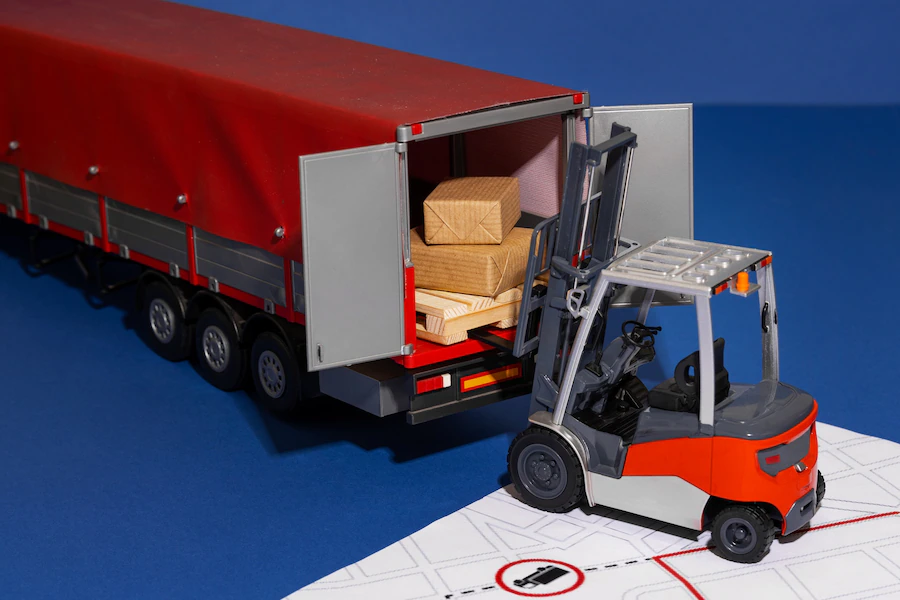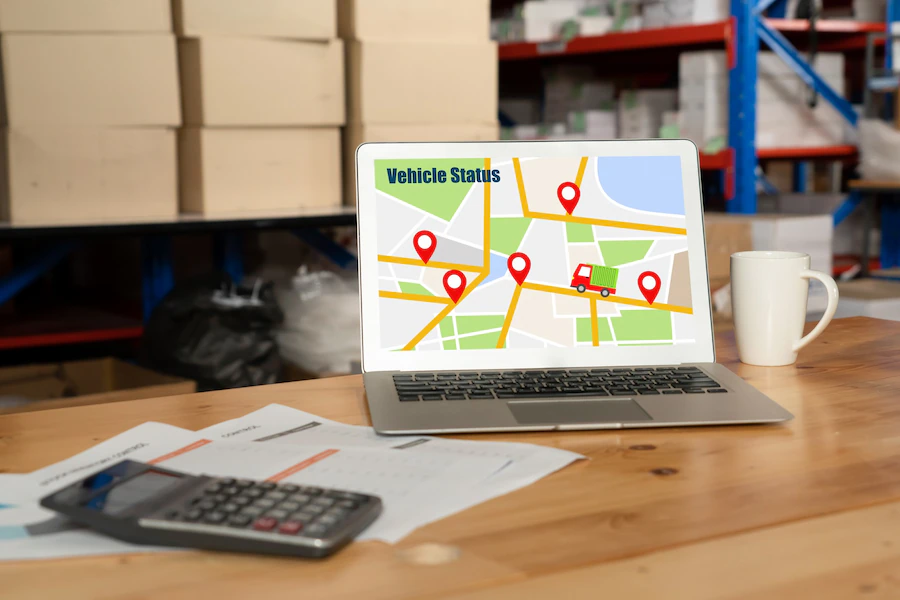A Business’s Guide To Loading And Organizing Utility Trailers
5 Mins Read
Published on: 25 July 2023
Last Updated on: 16 September 2024

toc impalement
If you own a business that requires the transportation of various items, utility trailers are a valuable asset. These versatile trailers offer a convenient way to haul equipment, goods, or materials from one location to another. However, loading and organizing utility trailers can sometimes be a challenging task.
This guide will provide practical tips and techniques to maximize the space in your utility trailer and ensure that everything is secured and organized during transportation. By following these guidelines, you can streamline your loading process and enhance the efficiency of your business operations.
Planning Your Load

Before loading your utility trailers, planning and strategizing how to arrange the items to make the most efficient use of the available space is important. This will help prevent damage to fragile items, minimize the risk of items shifting during transport, and enable easy access to the items upon arrival. Keep the following points in mind as you plan your load:
Group Similar Items Together
Grouping similar items together is a crucial step in organizing your utility trailer. By categorizing your items based on size, weight, fragility, and destination, you can effectively allocate space and minimize the risk of damage. This allows you to create a more organized and efficient load, ensuring that items that belong together are placed nearby. Additionally, grouping similar items helps you easily locate and access specific items when unloading, saving time and effort.
Consider Weight Distribution
Proper weight distribution is crucial for a balanced and stable trailer during transportation. You can maintain stability and prevent the load from shifting by evenly distributing the weight across the trailer. Placing heavier items at the bottom and toward the front of the trailer lowers the center of gravity, reducing the risk of accidents or load displacement. This ensures a safer journey, as the load will be less prone to shifting or destabilizing during acceleration, braking, or turning maneuvers.
Secure Loose Items
Securing loose items is essential for the safety of your cargo during transportation. You can prevent items from moving around in the trailer by using straps, ropes, or bungee cords. This minimizes the risk of damage caused by items shifting, colliding, or falling during transit. Moreover, securing loose items creates a safer environment by reducing the chances of accidents or injuries resulting from loose items becoming projectiles in sudden braking or acceleration.
Loading Techniques
Loading your utility trailer in an organized and strategic manner is crucial for maximizing space and ensuring the safety of your cargo. Consider the following techniques:
Utilize Vertical Space
Make the most of the vertical space in your utility trailer by incorporating shelves, hooks, or racks. By utilizing this space, you can safely stack items and maximize the available floor space. This is particularly useful when transporting large cargo or dealing with items of different sizes. By organizing and stacking items vertically, you can optimize the trailer’s capacity and create a more efficient and organized load, making it easier to access and locate specific items when needed.
Create Zones
Dividing your trailer into specific zones based on the types of items being transported can greatly enhance efficiency. Organizing your cargo into different zones allows you to quickly locate, retrieve, or unload specific items without rearranging the entire trailer. This strategic approach saves time and effort, especially when dealing with multiple items or shipment destinations. Creating designated zones allows you to maintain order and ensure that items are easily accessible, leading to smoother operations and improved productivity.
Strategic Placement
When loading your trailer, it’s important to strategically place your items for easy access and efficient unloading. Position frequently used items near the trailer door to retrieve them quickly without digging through the entire load. In contrast, reserve the rear of the trailer for larger or last-to-be-unloaded items. Doing so minimizes the need to rearrange the load during unloading, saving time and effort while maintaining a well-organized cargo space.
Protect Fragile Items
To prevent damage to fragile items during transportation, it’s recommended to provide adequate protection. One way to do so is by wrapping delicate items with bubble wrap, blankets, or padding to cushion them from impacts during transit. Furthermore, it’s essential to place these valuable items in a secure location inside the trailer where they are less prone to being bumped or jostled. By following these guidelines, you can ensure that your fragile items arrive at the destination undamaged, saving you time, money, and unnecessary stress.
Securing The Load
Properly securing your load is essential for the safety of your cargo, as well as the safety of other road users. Follow these guidelines to ensure a secure load:
Use Tie-down Straps
When loading items onto your trailer, it’s essential to use reliable tie-down straps for secure transportation. Opt for high-quality, adjustable straps that match the weight of your cargo. To maximize stability, always cross the straps over the items being secured. This technique creates additional tension, preventing shifting or dislodging during transit. Using proper tie-down straps and employing the cross-strap method ensures that your items remain securely in place, minimizing the risk of damage or accidents along the way.
Check For Stability
To ensure a safe journey, it’s crucial to check the stability of your loaded items. After loading, give the load a firm shake or push to test its stability. If anything moves or feels unstable, take the necessary steps to adjust and secure the items. This includes using additional tie-down straps or repositioning the items to prevent shifting during transit. By thoroughly checking for stability and making necessary adjustments, you can minimize the risk of accidents or damage caused by an unstable load.
Inspect Trailer Attachments
Regular inspections of your trailer attachments are essential for maintaining safety and preventing potential issues. Check the hitch, lights, and tires to ensure they are in proper working condition. A faulty hitch or lights can compromise the security of the load and create hazardous situations on the road. Similarly, worn or damaged tires can lead to blowouts or loss of control. By inspecting these vital trailer attachments regularly, you can identify any problems early on and address them promptly, ensuring a safe and smooth journey.
Conclusion
Loading and organizing utility trailers effectively is essential for businesses transporting items from one location to another. By planning your load, utilizing proper loading techniques, and securing the load appropriately, you can minimize the risk of damage, enhance efficiency, and ensure the safety of your cargo. With the tips and techniques provided in this guide, you can streamline your business operations and optimize the use of your utility trailers. Remember to always prioritize safety, be mindful of weight distribution, and double-check the security of your load before hitting the road.
read Also:


















Comments Are Closed For This Article